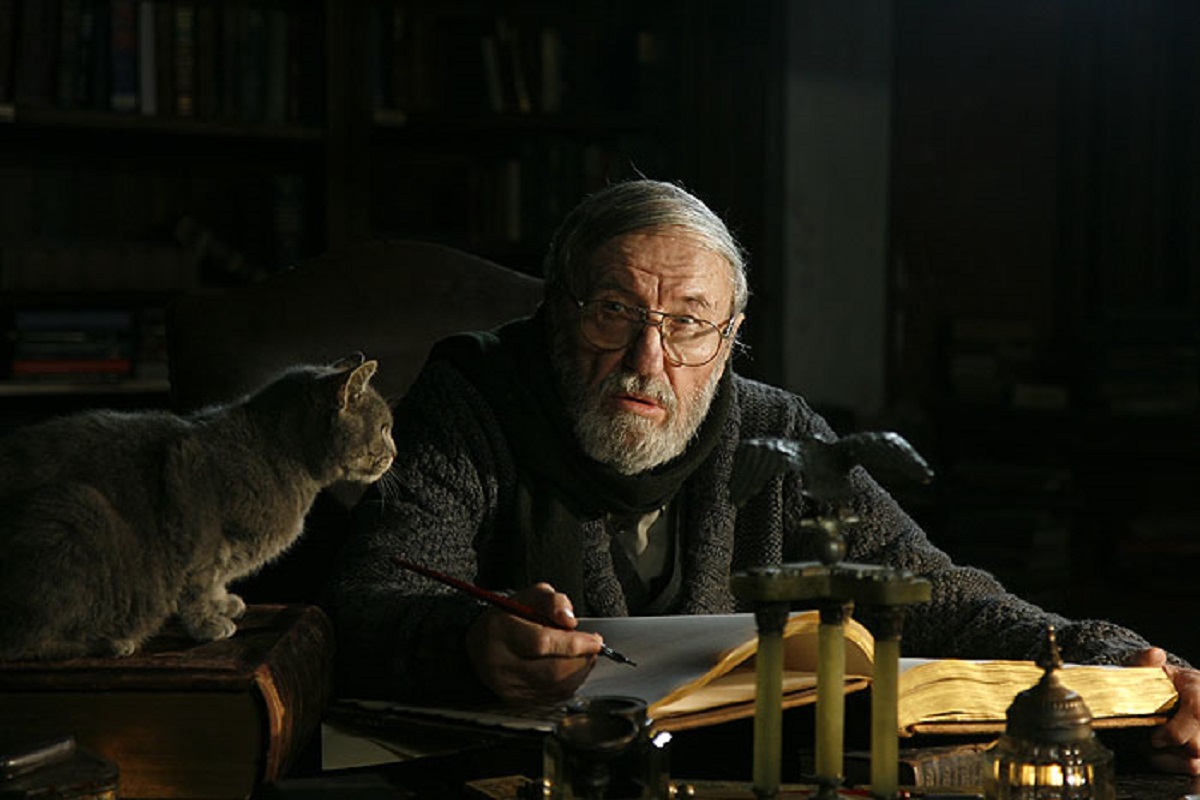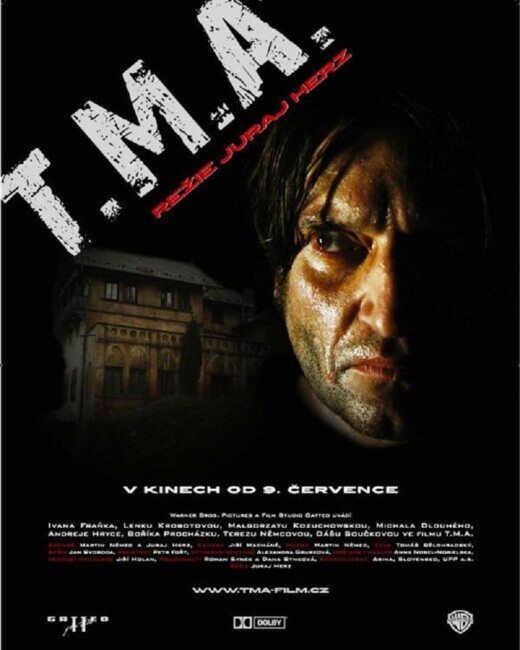aka Darkness
Crew
Director – Juraj Herz, Screenplay – Juraj Herz & Martin Nemec, Producers – Roman Synek & Dana Synkova, Photography – Jiri Machane, Music – Martin Nemec, Visual Effects Supervisor – Boris Masnik, Special Effects Supervisor – Alexander Kozak, Production Design – Petr Fort. Production Company – Gatteo Film Studio a.s./Arina s.r.o.
Cast
Ivan Franek (Marek Francl), Lenka Krobotova (Lucie Bouchal), Malgorzata Kozuchowska (Tereza Francl), Borik Prochazka (Werfel), Andrej Hryc (Bouchal), Michal Dlouhy (Viktor), Dasa Souckova (Xandra), Tereza Nemcova (Renata Korecka), Anna Vertelarova (Tereza Child), Vojtech Livicka (Marek Child), Petr Zalenka (Lojzik)
Plot
Marek Francl enjoys success in a Prague band. He decides to take some time off and retreats to Schwartzstein House, the home where he grew up in a countryside village. Intending to paint and relax, he soon experiences strange things in the house. The villagers mutter warnings and a girl who visits with his friends mysteriously vanishes. Gradually, Marek comes to believe that the things in the house, and especially those that lie behind the locked cellar door labelled ‘Verboten’, relate to when the house was occupied by the Nazis during World War II and tie in with forgotten memories from his childhood concerning his sister Tereza who has been placed in a psychiatric institution.
T.M.A. is a ghost story from Czech director Juraj Herz (1934-2018). Herz has had a long cinematic career that goes back to the 1960s. Although it is often difficult obtaining English-language information about his films, Herz has made a number of other ventures into genre material with works that include the horror film The Cremator (1969) and Ferat Vampire (1981) about a vampire racing car, as well as a series of fairytale adaptations including Beauty and the Beast (1978), The Frog Prince (1991) and The Emperor’s New Clothes (1994). The meaning of the title acronym T.M.A. is never made clear in this subtitled version. For English language release, it has been renamed Darkness – a frustratingly bland title that is shared by some fifteen other films, most notably Leif Jonker’s gory vampire film Darkness (1993) and the Spanish-made ghost story Darkness (2002).
The surprise as T.M.A./Darkness transpires is that there is not a huge amount of difference on a plot level between it and a standard English-language ghost story – in both, there is a sinister dwelling where some terrible crime has occurred in the past that is crying out for expiation in the present-day; the hero (usually a heroine in most American tv movie haunted house stories) who innocently moves in and/or inherits the house and will frequently find that some unexplained mystery in their personal past is tied back to the crime that occurred. (Either that or they are the reincarnation or descendant of someone in the past and that the events that occurred are replaying themselves out in the present or seeking vengeance against the protagonist because of the crimes of their ancestors).
T.M.A./Darkness varies little from the basics. What Juraj Herz does do is imbue the film with much in the way of dark, gloomy atmosphere. The house and surrounding township look grey and rundown. You get the impression here (and in other films) that that there is not enough money available to ordinary people in the Czech Republic for replastering houses or repapering walls. Furthermore, Herz has bled the frame of all bright colours and the film seems to take place in dun greys and browns. This comes with deliberate effect as when it comes to the coda, the film suddenly seems to be filled with light as the ghosts of the children leave the house, where even the darkly surrealistic depictions of human forms that Ivan Franek has been painting throughout now seem to be figures of angelically beautiful abstraction when seen in the light.

T.M.A./Darkness is surprisingly sparse in terms of supernatural/ghostly manifestations. There is one eerie scene where Ivan Franek’s band friends come to visit from the city – where Michal Dlouhy cuts his hand amid the drunken partying and then steps into a room where a ghost girl appears and touches the cut, stealing the blood and causing the wound to vanish. Or where Tereza Nemcova knocks on a bedroom door and then turns and sees a ghost child walking down the stairs behind her. There are however surprisingly few of these manifestations – certainly, less than you would get if this were an English-language film.
What Juraj Herz does conjure is an effective atmosphere out of the dim grey surroundings, the villager’s fearful mutterings and the mystery surrounding the disappearance of Tereza Nemcova. More often, what we get are suggested apparitions such as the Verboten door that sometimes does, sometimes doesn’t open or the radio that plays WWII era children’s midday choruses even when it is in the middle of the night; most overtly, a scene where Ivan Franek is surrounded by the shadows of the children dancing around the walls of the main room. There is a lack of gore, with the exception of one scene during the flashbacks to WWII where we see a leg being sawn off in grisly detail.
The film reaches an interesting end. [PLOT SPOILERS]. I am not sure I entirely followed the three different story strands that come together at this point. There is the left field revelation of Tereza Nemcova’s killer, which is not due to supernatural agency as we are led to expect. This comes as somewhat of a downer as the person responsible has been built up as one of the most sympathetic characters throughout. There is also the revelation of the ghosts being mentally handicapped children that were exterminated by the Nazis during World War II. I was not fully sure how this related to the other running subplot about Ivan Franek’s sister who appears to become possessed (and presumably had to be incarcerated to an asylum as a result) by the spirits of the children or what stabbed her in the eye through the keyhole as a child.


